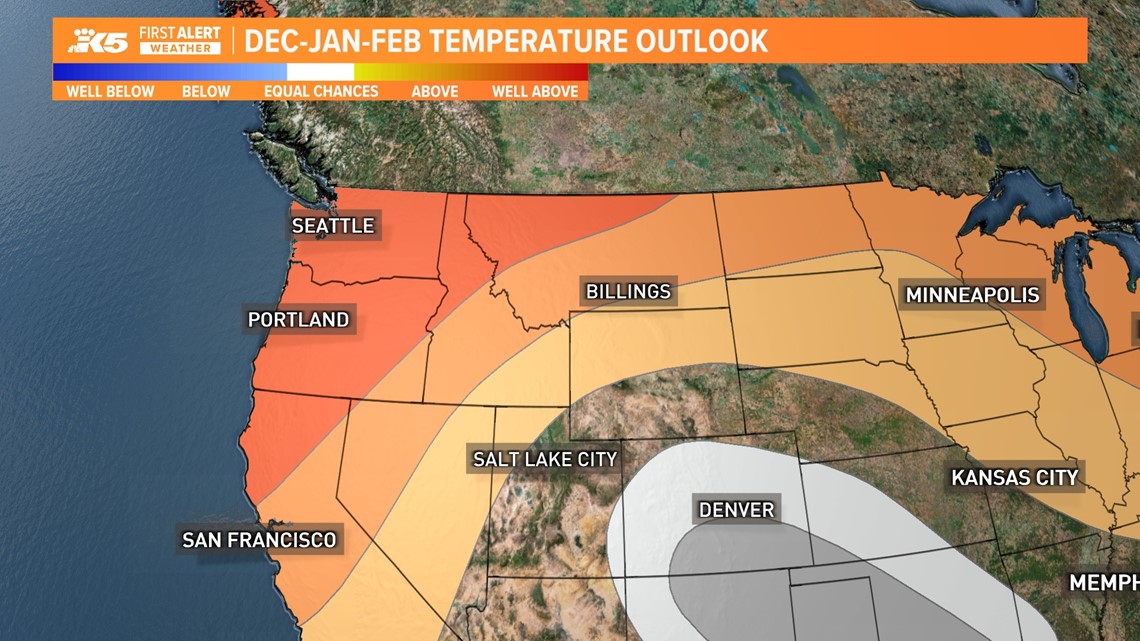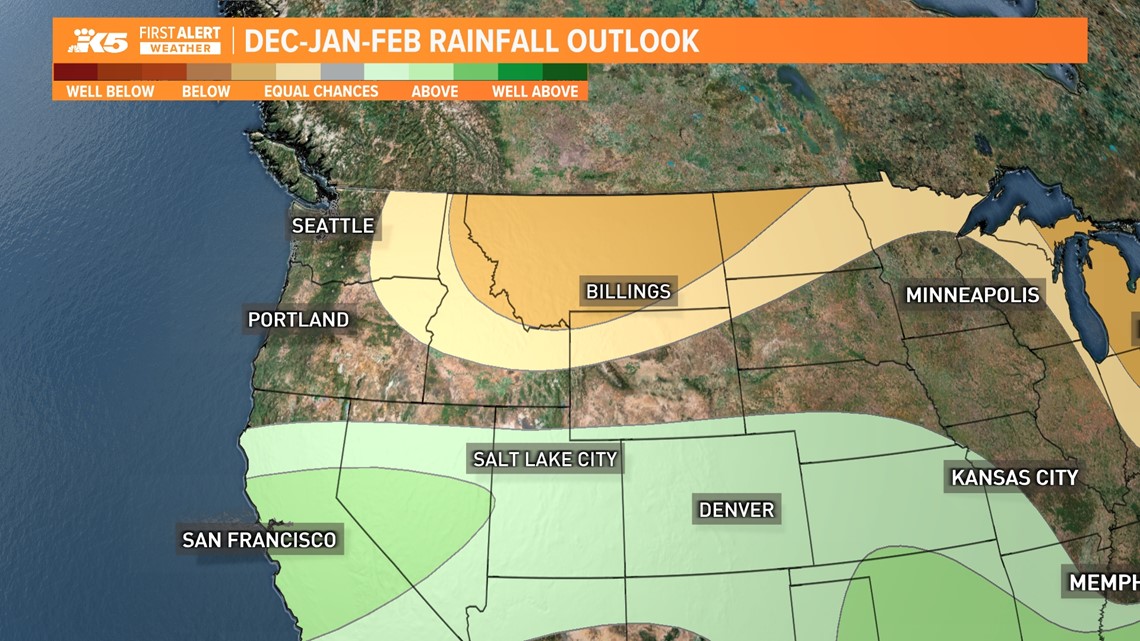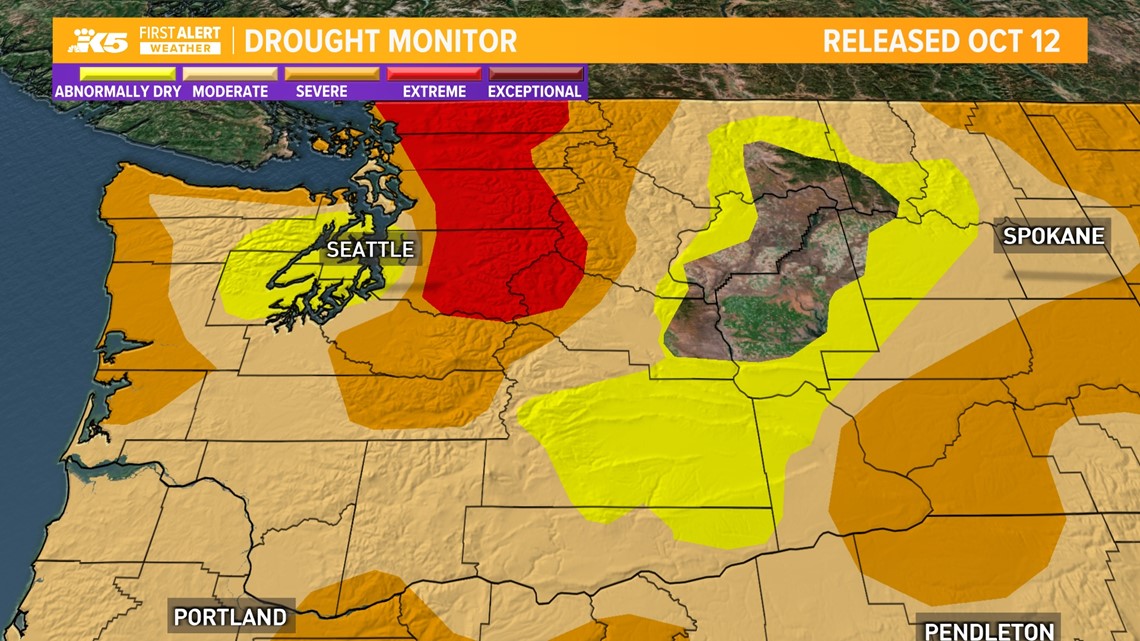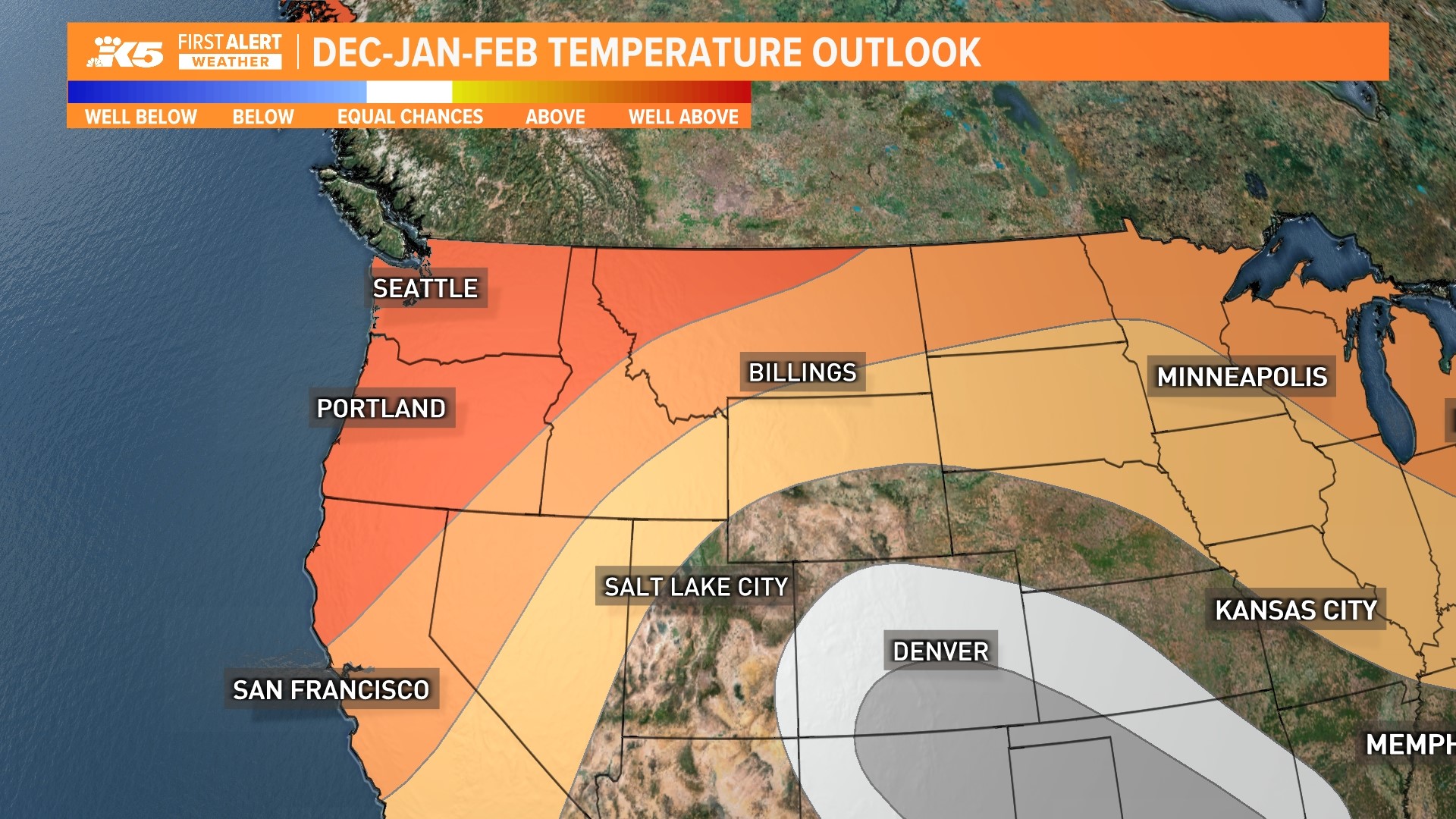SEATTLE — The National Oceanic and Atmospheric Administration (NOAA) released its winter weather outlook Thursday, favoring classic El Niño conditions for Washington state.
El Niño is a climate pattern associated with warmer-than-normal sea surface temperatures in the Pacific Ocean. It generally leads to higher chances of warmer temperatures and drier conditions in the Pacific Northwest.
In western Washington, NOAA forecasted a high probability of above-normal temperatures and equal chances of below, near or above-normal precipitation. Eastern Washington is slightly more likely to have below-normal precipitation.
KING 5 Meteorologist Rich Marriott said this prediction is in line with typical El Niño outlooks for western Washington as there is a stronger correlation between El Niño and temperature versus precipitation in the Pacific Northwest.


In the Puget Sound region, that forecast could mean average rainfall, which is 15.26 inches between December and February, and a slightly smaller chance of lowland snow.


However, Marriott cautioned El Niño forecasts can’t rule out the possibility of a major lowland snow event as the forecast can only account for seasonal averages, not one-off storms.
The Cascade Mountains tend to follow western versus eastern Washington because its weather is based on storms moving in from the Pacific Ocean and moisture being lifted into the mountain range, Marriott said.
With the possibility of warmer temperatures and average rainfall, Marriott said the Cascades could see normal snowpack above 4,000 to 5,000 feet and less than normal snowpack below that elevation because precipitation will more likely fall in the form of rain at lower elevations.
When will El Niño start?
Another factor to consider is timing. Marriott said Washington typically does not start seeing the effects of El Niño until the end of December or early January.
One illustration of that timing played out in British Columbia from 2009 to 2010. Cypress Mountain Resort near Vancouver had a massive snow month in December. However, temperatures warmed, and snow had to be brought in from interior B.C. for there to be enough to hold the 2010 Olympic events at the ski area.
How drought will be impacted
Although western Washington could see average rainfall this winter, NOAA predicted drought conditions will persist for most of the Puget Sound region. Drought conditions are expected to improve on the Olympic Peninsula and the southwest interior.
Marriott said that’s because the coastal areas tend to receive the first precipitation from storms, and one system can bring a lot of moisture, whereas it can take the Puget Sound region more time to rebuild rainfall.


How El Niño will impact the rest of the US
While El Niño tends to bring warmer, drier weather to the Pacific Northwest, the climate pattern brings other weather to the rest of the U.S. The southern United States and northern Alaska are expected to see wetter-than-normal conditions, easing drought concerns.
This is because an "enhanced" southern jet stream that is associated with strong El Niño events is expected drench California and the southern U.S., according to NOAA.
The northern Rockies and High Plains are expected to be drier than normal. Similar to Washington state, the Northeast is expected to be warmer than normal.
While many people are keeping a close eye on El Niño to see how winter will shake out, Marriott stressed El Niño isn’t a guarantee in the forecast.
Climate change could also throw a wrench because scientists don’t know if this weather phenomenon will continue to behave the same way it has in the past.
“That adds one more element of uncertainty to these forecasts,” Marriott said.

